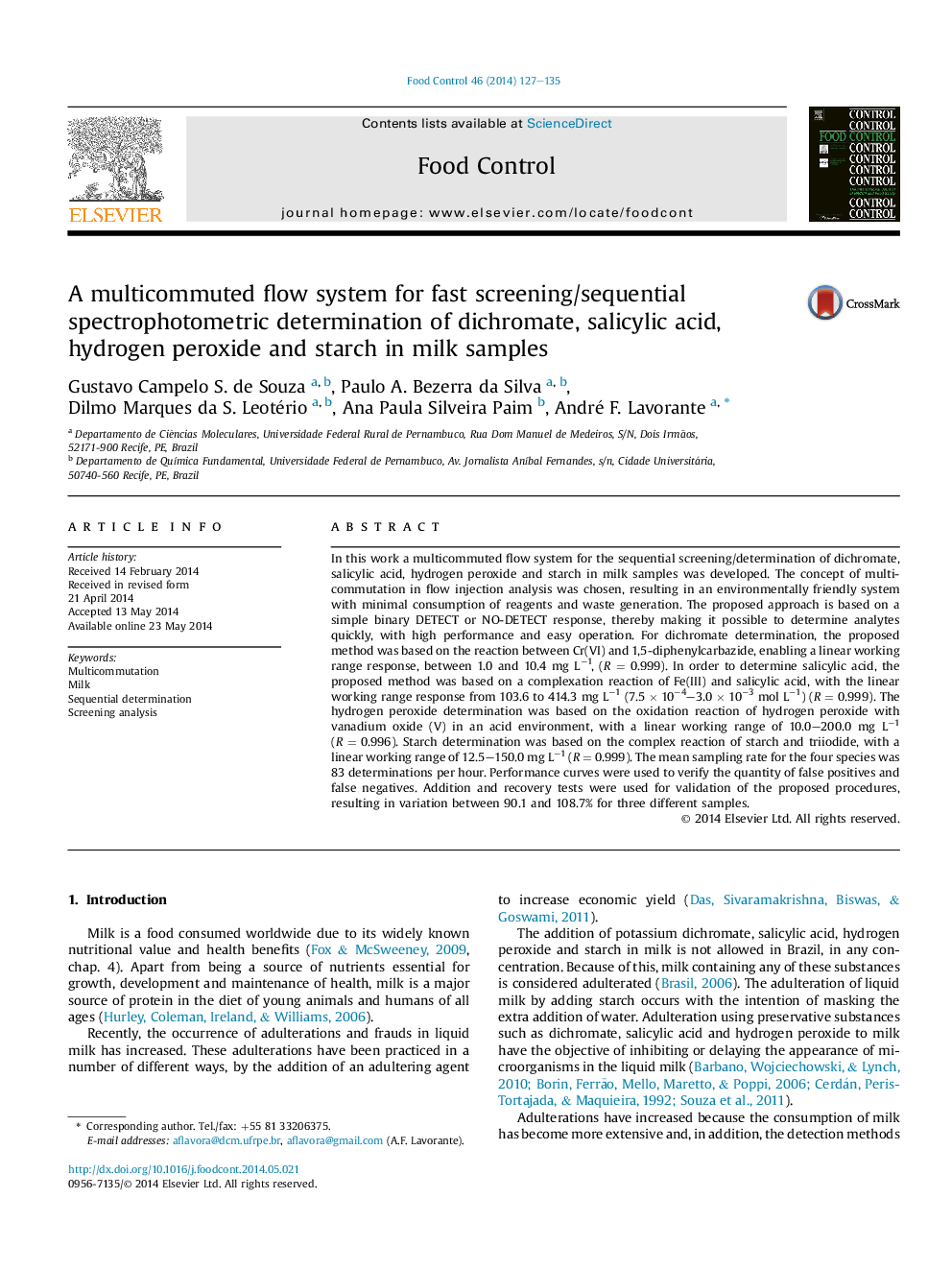| Article ID | Journal | Published Year | Pages | File Type |
|---|---|---|---|---|
| 6391186 | Food Control | 2014 | 9 Pages |
â¢Screening or quantification of adulterants in milk using multicommuted flow system.â¢The strategy of binary sampling enables the implementation of a sequential procedure.â¢The performance curve estimated low probability of a false positive occurrence.â¢The analytical procedure contributed for green analytical technologies.
In this work a multicommuted flow system for the sequential screening/determination of dichromate, salicylic acid, hydrogen peroxide and starch in milk samples was developed. The concept of multicommutation in flow injection analysis was chosen, resulting in an environmentally friendly system with minimal consumption of reagents and waste generation. The proposed approach is based on a simple binary DETECT or NO-DETECT response, thereby making it possible to determine analytes quickly, with high performance and easy operation. For dichromate determination, the proposed method was based on the reaction between Cr(VI) and 1,5-diphenylcarbazide, enabling a linear working range response, between 1.0 and 10.4 mg Lâ1, (R = 0.999). In order to determine salicylic acid, the proposed method was based on a complexation reaction of Fe(III) and salicylic acid, with the linear working range response from 103.6 to 414.3 mg Lâ1 (7.5 Ã 10â4-3.0 Ã 10â3 mol Lâ1) (R = 0.999). The hydrogen peroxide determination was based on the oxidation reaction of hydrogen peroxide with vanadium oxide (V) in an acid environment, with a linear working range of 10.0-200.0 mg Lâ1 (R = 0.996). Starch determination was based on the complex reaction of starch and triiodide, with a linear working range of 12.5-150.0 mg Lâ1 (R = 0.999). The mean sampling rate for the four species was 83 determinations per hour. Performance curves were used to verify the quantity of false positives and false negatives. Addition and recovery tests were used for validation of the proposed procedures, resulting in variation between 90.1 and 108.7% for three different samples.
